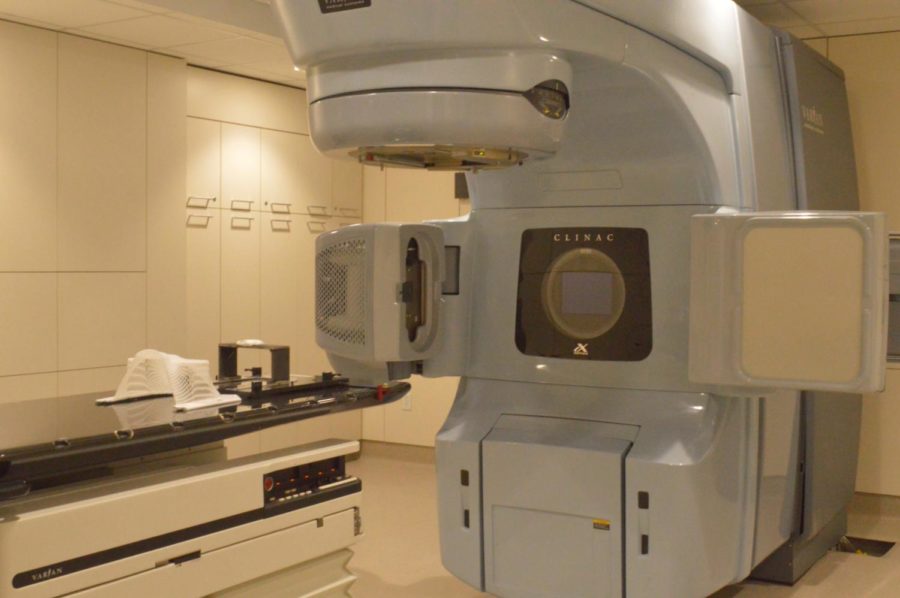Veterinary radiation facility opens at Iowa State
Jordyn DuBois/Iowa State Daily
Iowa State school of veterinary sciences opens a new radiation facility at Hixson-Lied Small Animal Hospital. The facility will treat a variety of animals to help get rid of cancerous tumors.
February 12, 2019
Editors note: This article previously misspelled “ruminants” and has been fixed. The Daily regrets this error.
After sending patients to other clinics for radiation therapy, Iowa State’s school of veterinary medicine will finally get to keep patients close.
Radiation therapy offers treatment to animals with cancerous tumors. The radiation facility is able to zero in on the tumors and destroy cancer cells.
“When you look at cancer treatments surgery, radiation, chemo/immunotherapy those are kinda the pillars of treatment and we have not really been able to offer radiation therapy,” said Dr. Chad Johannes a medical oncologist at the facility and assistant professor of veterinary clinical sciences.
Iowa State follows the University of Minnesota St. Paul, Wisconsin Madison and Missouri Columbia in radiation facilities. Iowa State is the first to get a radiation facility in Iowa and was able to get a newer model for radiation therapy that allows Iowa State to provide more advanced treatments to patients.
After three years of talking about bringing a radiation facility to Iowa State and a year of making plans, the facility opened on February 4. Within the first week, lots of patients have come in to discuss if their pets fit the criteria to be a candidate for radiation treatment.
“A lot of collaboration goes into this,” Johannes said.
Johannes said that a medical oncologist, surgery team members and radiation specialists decide as a team with the client what the best option for them and their pet is. If the pets best option is radiation therapy, then their pet becomes a candidate.
The facility was initially used on humans, and because of that can hold up to 400 pounds. Higher energies have been deactivated as animals use different amounts of energy than humans, Johannes said.
According to a press release, funding for the facility was covered by hospital funds, private gifts and a state appropriation from Rebuild Iowa Infrastructure Funds. The total for the facility was $3.7 million.
The clinic will treat its first patients later this week. First on the schedule is a cat, a dog and a pet rat.
The treatment is so precise that the staff anesthetizes the animal for the procedure. The procedure can last up to 30-45 minutes, but the beam is only on the animal a couple of minutes. Each patient can be looking at anywhere from three to 20 sessions, Johannes said.
In time the clinic plans on treating five to six patients each day. The clinic also plans on treating a variety of different animals.
“Any animal that we can get through the doors and anesthetize,” Johannes said. “It’s not uncommon in veterinary medicine to treat rabbits, ferrets, potentially small ruminants like goats, sheep they can fit through the room we can treat.”
Iowa State has a remote radiation oncologist that does all the planning for the procedures and allows the clinic to get up and running without having to hire a full-time radiation oncologist.
Drema Lopez, a previous human radiation therapist, will perform the procedures at the clinic. Lopez has 18 years of experience working with human radiation treatments.
Johannes said because of the location and number of current patients eligible for radiation therapy, that Iowa State will see a lot more patients.
“I think we’re well positioned on I-80/I-35 corridor when you look at the population we have around us in a three to four-hour radius,” Johannes said. “There’s a lot of pets that don’t have easy access to this therapy that now well be able to provide.”
















